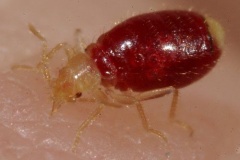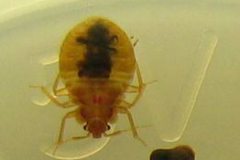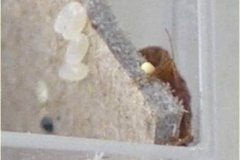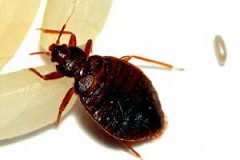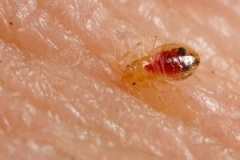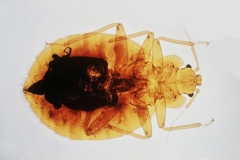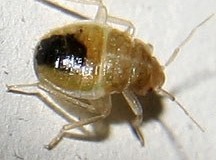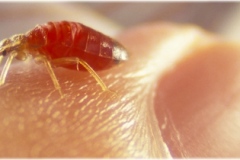Though bed bugs have been in the news a lot in recent years, there's a surprising amount of misinformation floating around about these blood-sucking ectoparasites. How much do you know about bed bugs?
1. If you wake up with bug bites, you must have bed bugs. With so much news about bed bug infestations, you might immediately think bed bugs are the culprit if you wake up with mysterious bites on your skin. Don't panic! First of all, quite a few other arthropods could be the cause of your bite marks, including fleas, mites, or even bat bugs. Also, many medical conditions cause symptoms that look similar to bug bites. If the marks persist but you don't find signs of an infestation, it might be worth a trip to your doctor.
2. I'm the only one in my house with bug bites, so they can't be from bed bugs. If you're the only one in your household waking up with bites, that doesn't exclude bed bugs as the cause. People react to bed bug bites differently, just as they do with mosquito bites or other insect bites. It's really a matter of how your body reacts to the bed bug saliva when you're bitten. Two people can sleep on the same bed bug infested mattress, and one can wake up without any signs of being bitten while the other is covered in bite marks.
3. Bed bugs are so tiny, you can't see them with the naked eye. It's true that bed bugs are pretty small insects, but they aren't microscopic. If you know where to look for them, you can definitely see them without the aid of a magnifier. The bed bug nymph is roughly the size of a poppy seed, and grows larger from there. Bed bug adults measure a bit larger than 1/8th of an inch, or about the size of an apple seed or a lentil. The eggs, which are just the size of a pinhead, will be harder to see without magnification.
4. Bed bugs live in dirty houses. If I keep my home clean, I can't get bed bugs. Bed bugs don't care how neat and tidy your house is, nor do they care if you're the best housekeeper on the block. As long as you have blood pumping through your veins to provide them with a meal, bed bugs will happily take up residence in your home. The same rule holds true for hotels and resorts. Whether or not a hotel might have bed bugs has nothing to do with how clean or dirty the establishment is. Even a five-star resort can host bed bugs. One thing to keep in mind, however, is that clutter can make it much more difficult to get rid of bed bugs once they're in your home, because they'll have lots of places to hide.
5. Bed bugs only bite when it's dark. It's true that bed bugs prefer to do their dirty work under cover of darkness, but light won't stop a hungry bed bug from biting you. In desperation, some people try leaving all their lights on all night, hoping the bed bugs will stay hidden like cockroaches. All that will do is make you more sleep deprived.
6. Bed bugs live in mattresses that's why they're called bed bugs! Yes, indeed, bed bugs do hide in the seams and crevices of your mattress. Since these nocturnal insects feed on your blood, it's to their advantage to live close to the place where you spend the night. But that doesn't mean bed bugs only live in mattresses. Bed bugs inhabit carpets and couches, dressers and closets, and even places you'd never think to look, like picture frames and switch plate covers. Also, bed bugs aren't limited to living in people's homes. Bed bugs are turning up in movie theaters, on commuter trains, and other places where people congregate, too. Bed bugsthey're not just for beds anymore.
7. You can feel it when a bed bug bites you. We're not talking about big bugs here. Bed bugs are pretty small, and their mouths are even smaller. Bed bug saliva contains a substance that serves as a mild anesthetic, so when one bites you, it actually does you the favor of numbing your skin first. It's very unlikely that you'd ever feel a bed bug bite when it happens.
8. Bed bugs jump from the floor to the bed. Bed bugs aren't equipped for jumping. Bed bugs don't have legs adapted for jumping, like fleas or grasshoppers. Bed bugs don't have wings, either, so they can't fly. They're totally reliant on crawling for locomotion, so moving from the floor to the bed requires them to climb up the leg of a bed, or to scale any belongings or furniture you've placed near the bed. This can work to your advantage if you're battling bed bugs, as you can create barriers to keep bed bugs from climbing onto your bed. Use double-sided tape on the bed legs, or place them in trays of water. Of course, if your bed spread touches the floor, the bed bugs can still climb into your bed, and bed bugs have been known to crawl up the wall to the ceiling, and then drop onto the bed.
9. Bed bugs transmit diseases to people. So far, scientists have found no evidence that bed bugs are capable of transmitting diseases to human hosts. For this reason, they're considered a nuisance pest rather than a health threat. When bed bug infestations started to rise in the U.S., many health departments and agencies were slow to respond to complaints about bed bugs, because they weren't considered a public health issue and resources weren't allocated for combating them. But though they don't transmit diseases, bed bugs still pose a health risk. Some people experience severe allergic reactions to bed bug bites, and people who are bitten can suffer from secondary infections of the bite sites. The emotional stress of dealing with a persistent bed bug infestation can also have a negative impact on your health.
Read more from the original source:
Bed Bug Myths – 10 Myths About Bed Bugs

 Residence
Residence  Location
Location 



